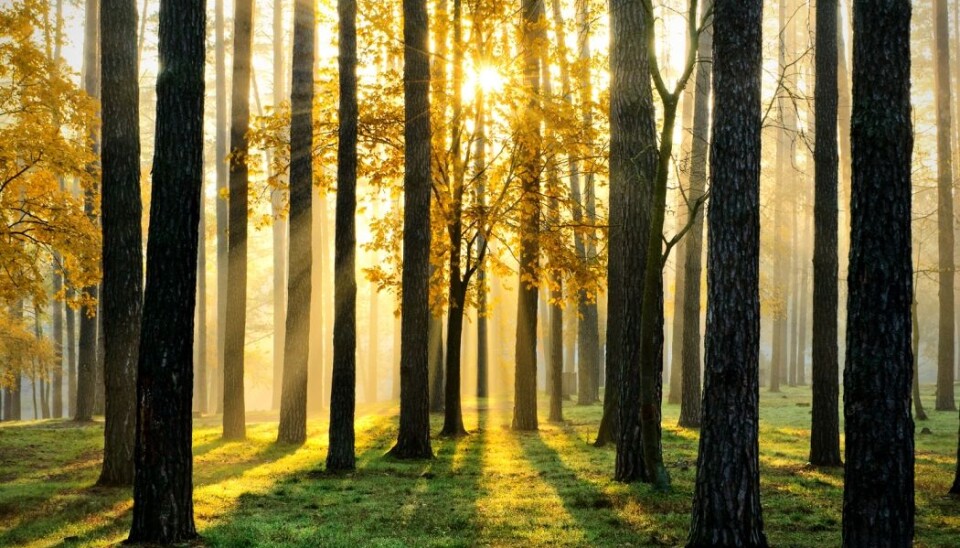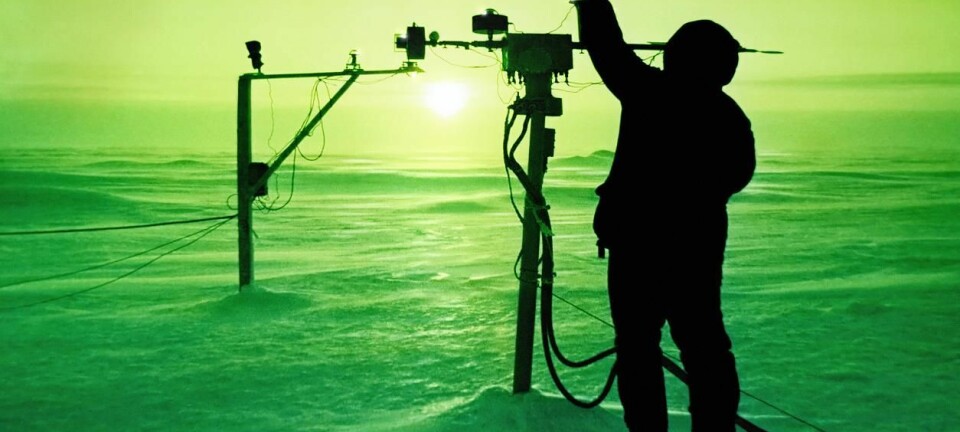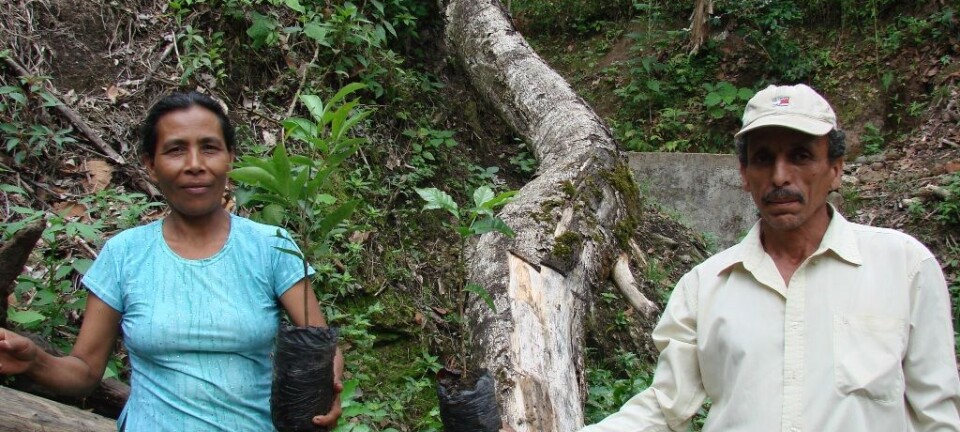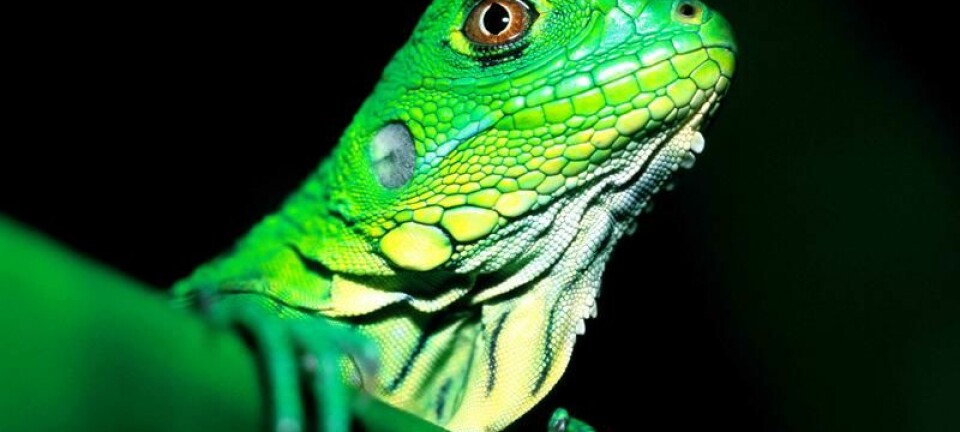An article from Norwegian SciTech News at SINTEF

Towards a bioeconomic future
Can our forests, seaweed, grass and fisheries waste be transformed into new and valuable raw materials? Researchers are asking 1500 Norwegian companies what they're currently doing with their resources, and what they see themselves doing in 2030.
Denne artikkelen er over ti år gammel og kan inneholde utdatert informasjon.
According to the OECD, bioeconomics will represent the guiding principle of the European economy by 2055. This means that focus will be centred on the production and transformation of renewable biological resources from the agricultural, forestry and marine aquaculture sectors, and biomass will represent the major source of raw materials. If the experts are to be believed, we are in many ways on the brink of a new industrial revolution.
The Norwegian government is currently developing a national strategy in this field, and researchers will now be carrying out fundamental analytical work aimed at promoting a higher level of sustainable innovation in Norway.
"As part of the Biosmart project we'll be carrying out a futures analysis to identify stakeholders and others that will play a part in a bioeconomy, and to find out where the various resources will be found", says Magnar Forbord at the Norwegian Centre for Rural Research (NCRR).
"If such ideas are to be profitable, we'll have to start thinking in terms of coordination and industrial clusters", adds Vibeke Stærkebye Nørstebø at SINTEF. "An incredible amount of marine and land-based resources currently remain unexploited because no-one is facilitating their development", she says.
Waste no longer

The idea of using resources derived from nature is nothing new to Norwegians, who have always exploited their natural resources. And this is set to continue. Exploitation will be smarter, and value will be added by means of refining processes and innovative applications.
For example, the company Borregaard manufactured paper and paper products from timber for many years. In the course of a 20-year period, the company has succeeded in developing a range of high-value products from tree components that were previously regarded as waste. These products are currently making a significant contribution to the company's revenues.
Another example is the company Biokraft Skogn, which was established in connection with Norske Skog's paper factory. The company manufactures liquid biogas from biological waste derived from the fish farming and forestry sectors. Among other things, the gas is used as fuel for public transport buses in Trondheim.
"These examples could be among the first of many", says Forbord. "Biomass is made up of trees, grass and different varieties of seaweed, as well as foodstuffs such as fish, maize, meat and milk. What we currently regard as unwanted remains and waste can be transformed into new products which will subsequently contribute towards a new, biologically-based, industrial sector.
Eleven work packages
Over the three-year project period, researchers from the NCRR, SINTEF, NIBIO, NTNU and Norut, as well as a number of international research institutes, will be working with a total of eleven topics or so-called 'work packages'. Furthermore, a series of scientific studies will be carried out looking into issues such as biotechnological transitions, legal rights, and the levels and scope at which wealth generation can be anticipated.
The researchers are now starting a survey of 1500 companies in the agricultural, forestry, fisheries, industrial and bioscience sectors to find out what they envisage for themselves in the future. What do they currently us resources for, and what are their views on opportunities for change?
When all the data have been collected, the researchers will hopefully have acquired a picture of where resources such as forests, maize and fisheries products are produced, where the people with the know-how are located, and what kind of products it might be possible to develop. With this as a springboard, it will be possible to develop projects and manufacturing processes that bring together economics, resource exploitation, levels of expertise and acceptance within the community as an integrated whole.
Locating the industrial clusters
"All bio-resources will be mapped and set in the context of the local population, transport networks, existing industries and suchlike", says Nørstebø. "This will provide a basis for identifying where it may be feasible to locate the industrial clusters", she says. "We'll need different sectors to work together, and this means breaking down the current barriers between the agricultural, forestry and aquaculture sectors. There are many questions", she says. "For example, where will the industries establish themselves, and what products should they focus on? What resources will supply the input and what will the products be? For example, will waste products be used at locations other than those at which they are produced? Where can we establish an integrated industrial cluster, and which companies should participate?" says Nørstebø.
One of the work packages will address the issues of innovation, regulatory frameworks, and the policies the public authorities should adopt in terms of resource allocation and regulations.
Another project will be a comparative study involving Norway, New Zealand and Germany. "This will be carried out in order to understand how societies change at national level", explains Forbord. "It's vital to look into what factors may act as incentives for change towards a bioeconomy", he says.
Long-term transition
In the next phase, four bioeconomic development scenarios will be studied. They will encompass all relevant sectors and stakeholders, and proposals will be put forward as to how transitions can be achieved.
Things cannot happen overnight, but development is ongoing in many different countries. Germany has already drawn up a bioeconomic strategy, and Belgium, the UK, the USA and Canada are well underway.
In conclusion, Forbord and Nørstebø are agreed. "Our project consists of a comprehensive system analysis embracing politics, resources, market opportunities, sustainability and changes in mindset within society. The Research Council of Norway is funding the project as part of its BIONÆR programme, and has encouraged it to adopt daring and ambitious goals. "And that's exactly what we feel we're doing".



































